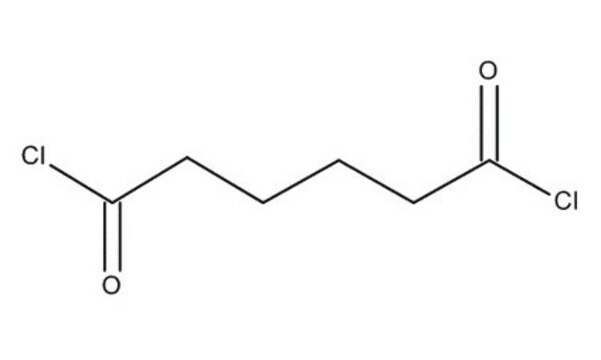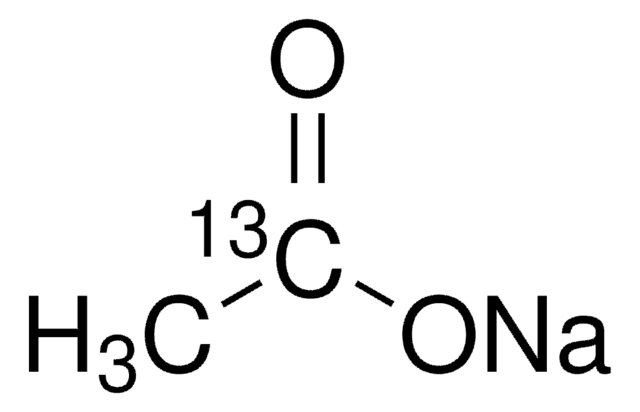165212
Adipoyl chloride
98%
Sinónimos:
Adipyl chloride
About This Item
Productos recomendados
Quality Level
assay
98%
form
liquid
refractive index
n20/D 1.471 (lit.)
bp
105-107 °C/2 mmHg (lit.)
density
1.259 g/mL at 25 °C (lit.)
SMILES string
ClC(=O)CCCCC(Cl)=O
InChI
1S/C6H8Cl2O2/c7-5(9)3-1-2-4-6(8)10/h1-4H2
InChI key
PWAXUOGZOSVGBO-UHFFFAOYSA-N
¿Está buscando productos similares? Visita Guía de comparación de productos
Categorías relacionadas
General description
Application
- A coupling agent in the synthesis of PEG-PLA-PEG triblock copolymers, enabling the formation of unique polymer structures with potential applications in drug delivery systems, tissue engineering, and controlled release systems.
- A cross-linking agent in the synthesis of biodegradable aromatic-aliphatic poly(ester-amides) from monolignol-based ester dimers. These polymers possess favorable characteristics like exceptional mechanical strength, biodegradability, and thermal stability, making them suitable for a range of applications including, controlled drug delivery systems, and environmentally-friendly packaging materials.
- Used in the preparation of biphenyl end-capped liquid crystals.
Other Notes
signalword
Danger
hcodes
Hazard Classifications
Skin Corr. 1B
Storage Class
8A - Combustible corrosive hazardous materials
wgk_germany
WGK 3
flash_point_f
233.6 °F - closed cup
flash_point_c
112 °C - closed cup
ppe
Faceshields, Gloves, Goggles, type ABEK (EN14387) respirator filter
Elija entre una de las versiones más recientes:
¿Ya tiene este producto?
Encuentre la documentación para los productos que ha comprado recientemente en la Biblioteca de documentos.
Los clientes también vieron
Artículos
Atomic layer deposition (ALD) techniques have emerged in the last ten years to meet various needs including semiconductor device miniaturization, conformal deposition on porous structures and coating of nanoparticles. ALD is based on two sequential self-limiting surface reactions.
Nuestro equipo de científicos tiene experiencia en todas las áreas de investigación: Ciencias de la vida, Ciencia de los materiales, Síntesis química, Cromatografía, Analítica y muchas otras.
Póngase en contacto con el Servicio técnico








